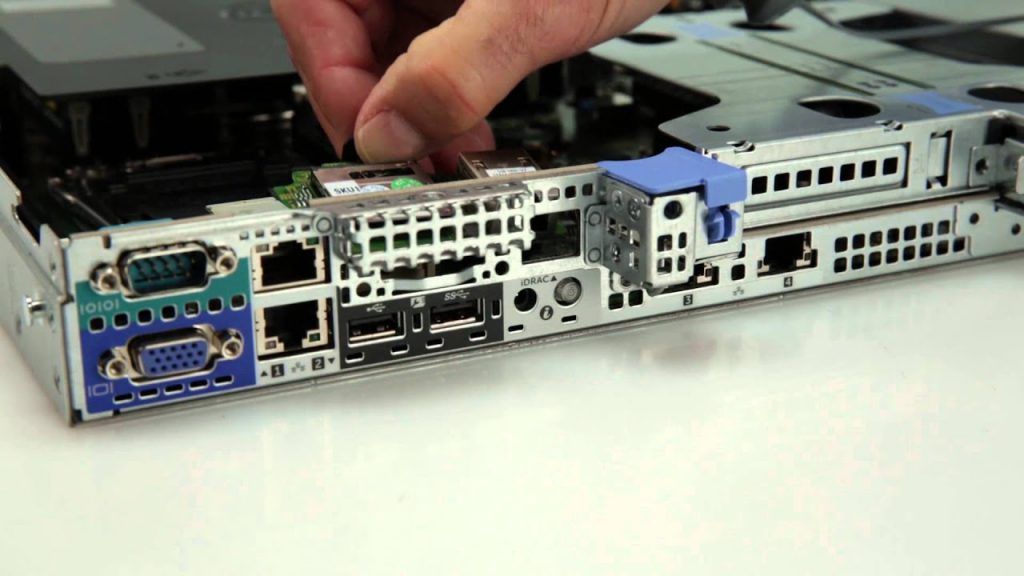Introduction
The Integrated Dell Remote Access Controller (iDRAC) has been an essential tool for remote server management in Dell PowerEdge servers for many years. However, as with many technologies, earlier generations of iDRAC were not without their issues. The heavy reliance on Java-based applets in older iDRAC versions (like iDRAC6 and iDRAC7) caused significant challenges, both in terms of security vulnerabilities and usability, which ultimately led to a subpar user experience. Many users found that these early versions of iDRAC were plagued with browser compatibility issues, security vulnerabilities, remote console failures, and virtual media disconnections. These problems were frustrating, especially since Dell’s lack of firmware updates to address these issues left customers with little recourse except to resort to complex workarounds.
In this article, we’ll explore the security and usability challenges faced by users of older Dell iDRAC generations, how these challenges affected the effectiveness of remote server management, and how Dell improved iDRAC over time. We’ll focus on the evolution of iDRAC from the early Java-based versions to the more modern, HTML5-based consoles of the later generations.
The Security and Usability Challenges of Older Dell iDRAC Generations
Java Dependency and Security Problems
The most significant issue with earlier versions of iDRAC, particularly iDRAC6 and iDRAC7, was the heavy reliance on Java applets for the remote management interface. When iDRAC was first developed, Java was a popular choice for creating cross-platform applications that could work on a variety of operating systems and browsers. It provided an easy way to create applications that could function consistently across different environments.
However, Java’s inherent security vulnerabilities quickly became a major concern, particularly for web-based applications like iDRAC. The Java Web Start applet system required the installation of browser plugins to load the remote management console. But as Java became increasingly susceptible to security flaws, this approach led to serious issues.
1. Java’s Security Vulnerabilities
Java has long been notorious for security vulnerabilities, particularly in older versions. Attackers could exploit these flaws to gain unauthorized access or perform malicious actions. Since iDRAC6 and iDRAC7 depended heavily on Java to run the remote management console, these vulnerabilities exposed critical enterprise servers to significant security risks. In fact, it wasn’t uncommon for system administrators to find themselves using outdated Java environments that were vulnerable to exploitation.
With newer Java updates, security patches were released, but they often broke compatibility with the existing iDRAC applet, leading to a frustrating game of catch-up for users. Java’s web-based applet also required frequent updates to ensure compatibility, making it increasingly difficult for administrators to maintain a consistent, functional remote management experience.
2. Browser Compatibility and Blocked Java
Over time, browsers started to aggressively block Java applets due to the growing security risks. For example:
- Google Chrome and Mozilla Firefox stopped supporting Java plugins altogether, meaning administrators could no longer access the iDRAC console through these browsers.
- Internet Explorer, which still supported Java applets at the time, began displaying security warnings every time an attempt to load the iDRAC console was made. This created a scenario where administrators were hesitant to proceed due to the clear security risks.
This incompatibility left users with limited choices for accessing the iDRAC interface. The most pressing issue was that each iDRAC version seemed to require specific versions of Java to function properly, leading administrators to juggle multiple Java versions to support different generations of iDRAC.
3. No Firmware Updates to Fix These Issues
Despite repeated complaints about the security and usability issues, Dell did not release significant firmware updates for the older iDRAC generations to address the Java vulnerabilities or the compatibility issues with modern browsers. This created a critical gap in the product’s usability. Rather than addressing these flaws, Dell support often suggested that users upgrade to newer servers.
For organizations operating on tight budgets, this was an unacceptable solution. Many customers felt that they had no choice but to either deal with the ongoing issues or invest in new hardware, leaving them with limited options.
Complex Workarounds and Unreliable Fixes
Faced with these significant challenges, many administrators had to resort to complex workarounds and custom modifications just to get the remote console to function. Unfortunately, these fixes often required a high degree of technical expertise and were unreliable at best.
1. Java File Modifications and Customization
Some users attempted to modify or “hack” their Java settings to bypass the problems. Here are some common modifications:
- Editing Java Security Files: Administrators would adjust Java’s security settings in the Java Control Panel, adding iDRAC’s IP address or domain to an exception list. While this would allow Java to bypass some security measures, it was a fragile workaround that required continuous maintenance.
- Modifying the Java Runtime Environment (JRE): More advanced users sometimes had to configure custom versions of Java and apply specific patches. Unfortunately, this solution did not guarantee success, and administrators could never be sure that the setup would work consistently.
Even with these adjustments, the system would often fail to load, and users would have to begin the troubleshooting process all over again. It became clear that modifying Java files was a time-consuming and unreliable workaround that provided no real solutions.
2. SSL/TLS Configuration Adjustments
Another workaround involved configuring SSL/TLS protocols to make the iDRAC interface compatible with Java and specific browser settings. iDRAC used SSL 3.0 and SSL 1.2, which had specific compatibility requirements for Java and browser versions. However:
- Enabling SSL 1.2 or SSL 3.0 often resolved some issues, but it was incompatible with certain browsers.
- Browser incompatibility and SSL protocol mismatches meant that administrators had to tweak the SSL settings on iDRAC, leading to additional complexity.
In some instances, after getting the system to log in, the iDRAC console would freeze or time out, forcing administrators to restart the entire process. This resulted in extended downtime and a highly inefficient workflow for remote server management.
3. Console Timeouts and Virtual Media Disconnections
Another frustrating problem was console timeouts and virtual media disconnections. Administrators would mount virtual media, such as an ISO image, to install or troubleshoot an operating system, but the connection would drop unexpectedly, causing the process to restart. This led to significant delays, with tasks that should have taken only minutes (like rebooting the server with a mounted ISO for OS installation) taking hours.
The inability to maintain stable connections meant that remote management wasn’t just difficult, it was often unmanageable. This was particularly problematic for IT teams with tight schedules, where time spent troubleshooting iDRAC issues could have been used more effectively.
Moving Forward: iDRAC Evolution and Fixes
Thankfully, Dell eventually acknowledged the issues plaguing iDRAC6 and iDRAC7 and began to make meaningful improvements in later generations. iDRAC8, released in 2014, was a game-changer, as it marked a shift from Java-based applets to HTML5-based remote consoles. This shift resolved many of the long-standing issues, particularly those involving Java vulnerabilities, browser compatibility, and security flaws.
1. Transition to HTML5
The move to HTML5 eliminated the need for Java entirely, allowing users to access the remote console directly through a web browser. HTML5 offered several advantages:
- It provided cross-browser compatibility, eliminating the need for specific browser versions or plugins.
- It was secure and more stable, with no reliance on outdated or vulnerable Java components.
- The user interface became more intuitive, making it easier for administrators to manage their servers.
2. Improved Security
With iDRAC8 and later versions, Dell significantly improved security. Key updates included:
- Enhanced SSL encryption to ensure the secure transmission of data between the user and the iDRAC controller.
- Multi-factor authentication for added security.
- Role-based access control to limit access to sensitive information and critical functions.
3. Lifecycle Controller Enhancements
One of the standout features of iDRAC8 and later generations was the Lifecycle Controller. This feature improved hardware management by offering:
- Remote OS installation: Administrators could now install operating systems remotely without the need for separate software or firmware downloads.
- Integrated management: The Lifecycle Controller allowed for easier management of hardware, software, and firmware updates directly from the iDRAC interface.
These enhancements made iDRAC much more reliable, user-friendly, and secure, solving many of the issues that had plagued earlier generations.
Conclusion
The early Java-based versions of Dell iDRAC, particularly iDRAC6 and iDRAC7, were riddled with security vulnerabilities, browser compatibility issues, and significant usability challenges that made remote management a frustrating experience. As Java applets became increasingly obsolete, Dell’s decision to upgrade to HTML5-based interfaces in iDRAC8 marked a major turning point in improving both functionality and security. Today’s iDRAC is a far more robust and reliable tool for managing servers remotely, and Dell’s commitment to continual improvement ensures that iDRAC will remain a valuable asset for administrators in the years to come.
For businesses still relying on older iDRAC versions, it is strongly recommended to upgrade to newer hardware or firmware to benefit from the improvements in security, ease of use, and remote server management.


